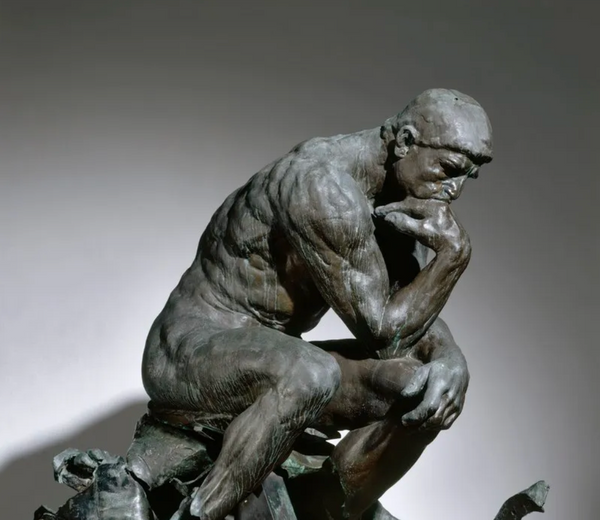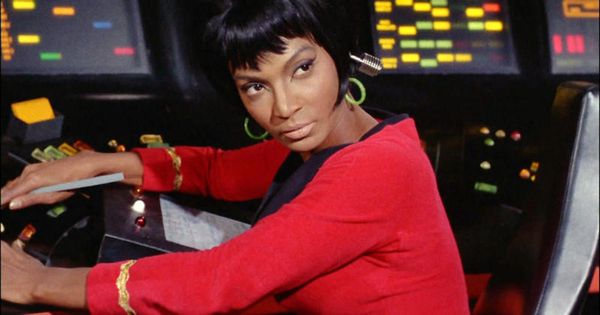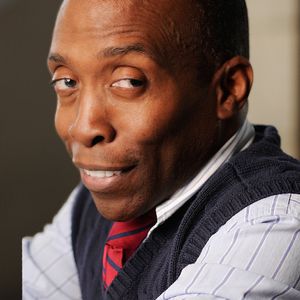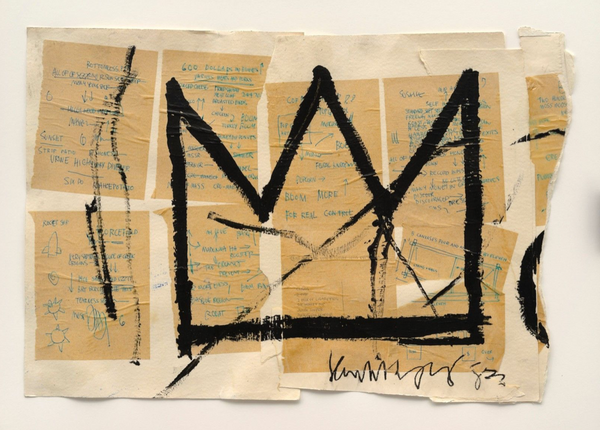They were brown suede booties with zippers and a 2.5-inch heel and they were perfect. It was an effort to find them, but after two days and multiple cities, I finally had shoes that fit me.
This was a new experience.
Before this, my approach to buying shoes was comprised of the following steps: A) Look for the shoes I want, and B) Buy my size. But something had changed. Finding a size 14 was difficult enough, but even finding them, most did not fit. It was a similar story with other articles of clothing. Sizing of pants went from a simple measurement I could trust to a vague hint in some undecipherable language.
The change was not in my body. My feet and waist were the same size. What had changed was how I publicly express my gender. I went from wearing men’s clothes to wearing women’s clothes.
With that one change, shopping went from a simple task to one of deliberate and time-consuming complexity. It felt like a set of obstacles had been erected to prevent success in even the most mundane of tasks.
The more I thought about my own change and what this represented, the more I realized that it might be true.

The best of essays can be distilled into a single sentence. That is because they are a single sentence. If the human mind were something vastly different than it is, a single sentence might be all we ever need. But we need more than a statement of fact, a detailing of evidence. We need a story. Our minds need context. And that is what the essay is: the context that gives the statement its meaning.
In 1975, Toni Morrison presented1 such a story to a small group at Portland State University. This little-known speech, called “A Humanist View,” has often been distilled to a fundamental quote:
“It’s important, therefore, to know who the real enemy is, and to know the function, the very serious function of racism, which is distraction. It keeps you from doing your work.”
I find this is as good as one sentence could ever come to distilling this essay. But there is a loss of context. What work are we to be doing? From what are we being distracted? Toni Morrison was a master of context, and it is the context which holds the power in this speech.
“Was there,” she asks, “a 17-year-old girl there? With a tree-shaped scar on her knee?”
Morrison argues that the reality of our existence is not adequately detailed in history, or anthropology, or economic indices of number of human beings imported. “Now that’s simply what economic indices are like,” she writes. “But it’s also very frequently what American history’s concept of Blacks is like. It certainly isn’t the fan-shaped spread of rice bursting from a gunnysack. It’s not the thunder roll of barrels, turpentine cascading down a plank. And it’s not a 17yo girl with a tree-shaped scar on her knee and a name.”
The detailing of our existence, she notes, “may very well be left to the artists . . . For art focuses on the single grain of rice, the tree-shaped scar, and the names of people, not only the number that arrived.”
Toni Morrison was a master of context, and it is only in the full context of Morrison’s exceptional speech that we see the power of another statement: “You don’t waste your energy fighting the fever; you must only fight the disease. And the disease is not racism. It is greed and the struggle for power.”

I have always been a girl. But my body doesn’t produce a very specific chemical, so for my own safety I spent most of my life hidden as a boy. When I finally decided to stop hiding, I was excited to finally wear the right clothes. Immediately, however, I began to see the difference.
“I tried on three pairs of the exact same size jeans,” I told a friend, “And they all fit totally differently.”
She chuckled at my naivety, born into the landscape of women’s clothing, explaining to me that a size 18 in one brand might be a 14 in another. One pair of jeans may fit in the hips while another pair in the same size or a different color might not. It felt as if roadblocks had been posted intentionally to make finding clothing difficult and made me think of a very specific line from Toni Morrison’s speech. It is, in fact, the sentence immediately following the most commonly used quote, but one fewer people have read:
“ . . . It keeps you from doing your work. It keeps you explaining over and over again, your reason for being. Somebody says you have no language and so you spend 20 years proving that you do. Somebody says your head isn’t shaped properly so you have scientists working on the fact that it is. Somebody says that you have no art so you dredge that up. Somebody says that you have no kingdoms and so you dredge that up…There will always be one more thing.”

Women know intuitively that there will always be one more thing.
When I go shopping and find a shirt I like, I tend to buy two or three of them in different colors. This is as much because I like variety as it is because I know that, as a woman, I need to be varied. When I lived as a boy, I often bought three exact replicas of the same shirt because I hated thinking about clothing. My male friends lauded me on my intellect and resourcefulness.
As a woman, I have no such congratulations. I have to be hyper-vigilant of what I wear and make sure that I don’t appear to wear something that is too long or too short, too low or too high. And I cannot wear the same clothes too often. As a woman, a small wardrobe is not a sign of intellect, but a failure so egregious it is worthy of news reporting.
In fact in 2017, the Daily Mail did just that, reporting2 that a TV show host named Lisa Wilkinson wore the same floral blouse twice. It was a scandal with public outrage that went viral. Because she was a woman, she was dragged through the mud for the heinous crime of wearing the same blouse twice . . . a full four months apart.
What is so telling about this is that three years earlier, her male co-anchor, wanting to prove that women are treated unfairly, wore the same suit every day for an entire year, and nobody even noticed.3
When I first read Lisa Wilkinson’s scathing retort to the Daily Mail,4 I was elated. It was angry and edgy and powerful. But then I thought about Toni Morrison’s speech, and realized that Lisa Wilkinson spent way more time and money buying clothing than the man sitting next to her, and she still had to write a retort to defend how she wore them.
“There will always be one more thing.”

We often read Toni Morrison’s speech as if it is only about race, but Morrison was never so limited as to address racism disconnected from her reality as a woman. I believe she knew—as so many women know so intuitively that the knowledge is indistinguishable from our very bones—that addressing patriarchal power must be done carefully, lest it be rejected at best, and fought violently at worst. Her inclusion of feminine reality in that speech was subtle. Such mentions as the 17-year-old girl with the tree-shaped scar, for instance, might even go unnoticed. Yet it is this speech that I so often turn to when I think about how to be stronger as a woman.
I used to be primarily an anti-racism writer, but the longer I fought, the longer I saw my sisters pushed down and beaten even by those who would claim that equity is our goal. If the disease “is greed and the struggle for power,” then it is greed and the struggle for power anywhere that we must fight. While patriarchy reigns, while femininity is denigrated and seen as weak and less, then the disease rages.
Morrison reminds me of this. Her voice whispers in my head. Echoes of this speech speaking to me.
“It keeps you from doing your work.”
My work, our work, is our art. Our work is in writing about the details, exploring the nuance, telling the stories, women’s stories, feminine stories, nonbinary stories, two spirit stories. Our work is taking all these stories out of the context of maleness and making them our own.
“[Racism’s] hoped-for consequence,” Morrison notes “is to define Black people as reactions to White presence…To avoid the prison of reacting to racism is a problem of the very first order.”
How much of a woman’s existence is defined as a reaction to male presence? How telling that Lisa Wilkinson’s male co-anchor can wear the same suit every day for a year and say nothing, while she has to work harder to shop and even then spend time defending herself against attack.
“It keeps you from doing your work.”
There is a truth I have come to believe deeply, one that nothing yet has been able to refute: There is but one fight.
Toni Morrison was giving a speech about racism, but over the decades that speech has led me to a different question: Can we ever successfully fight any inequality while half of the human population is held in relative bondage?
Is racism (or classism, or ableism, or any inequity) really a battle we can win if half of humanity fights daily just to be valued? How much of the fight for LGBTQIA+ rights is fundamentally the fight against an inherent structure of masculine dominance? Are other inequalities not just pillars themselves of the same greed and the struggle for power? And how much of the current, frightening legal and political landscape exists simply because we are questioning the rightness of masculinity’s dominance?

I love buying cute shoes, but it is easy for me to see women’s clothing as intentionally, structurally, created to steal time, to see them as a distraction, as one more thing.
Women’s clothing is more expensive, and women are required to take more time finding the right fit while their wardrobe is also expected to be much more varied. All while we make less money.
How much of this is because femininity is cast in response to a male world? Women are seen as wanting to look nice for men rather than for ourselves. But wear the same blouse twice in a single year, girl, and there may just be news stories about you. How much of this is structural obstacles created as distraction? As one friend put it: Sizing is sexist and pockets are power.
This is the reality that I have come to appreciate: No battle for equity will be won while femininity is less valued than masculinity. And no battle for equality can be won without women placed first in that battle.
We cannot win against racism without focusing our efforts on Black women, indigenous women. We cannot win against ableism without focusing on disabled women. We cannot win against ageism without focusing on older women. “[The disease] is greed and the struggle for power,” and no battle against that disease will accomplish anything unless it focuses on women.
While women anywhere are bound by unequal pay, the disease rages.
While women anywhere are bound by unequal emotional labor, the disease rages.
While women anywhere are bound by unequal social expectations, threatened by men for what they wear, and do not have the right to control their own bodies, the disease rages.
While femininity yields to masculine dominance anywhere, the disease rages.
There is but one fight, and avoiding “the prison of reacting to [that fight] is a problem of the very first order.” Toni Morrison worked her entire life avoiding the prison of reacting to racism and patriarchal greed and the struggle for power because she knew it would keep her from doing her work.
There will always be one more thing. They will never stop. Focus on your art.
1. The audio recording of the speech is available on the Portland State University Soundcloud page at: https://soundcloud.com/portland-state-library/portland-state-black-studies-1
The full speech transcription created by Dr. Keisha E. McKenzie and available on her website at: https://www.mackenzian.com/wp-content/uploads/2014/07/Transcript_PortlandState_TMorrison.pdf
2. http://www.dailymail.co.uk/tvshowbiz/article-4399892/Lisa-Wilkinson-wears-blouse- twice-Today-show.html
3. https://www.smh.com.au/entertainment/tv-and-radio/karl-stefanovics-sexism-experiment-today-presenter-wears-same-suit-for-a-year-20141115-11ncdz.html#ixzz3JKZezGL2
4. https://www.huffpost.com/archive/au/entry/i-want-to-thank-the-fashion-police-for-airing-my-dirty-laundry_a_22036263
Originally published in OHF Magazine, Issue No. 3.
















